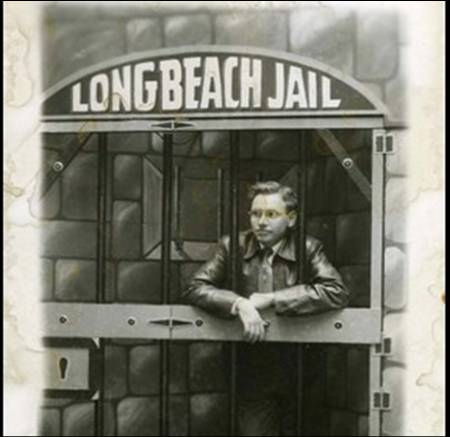Continuation of our series on portfolio management and the Buffett Partnership Letters, please see our previous articles for more details. The 1965 letter is a treasure trove of insightful portfolio management commentary from Warren Buffett. This is the Buffett for purists – the bright, candid young investor, encountering intellectual dilemmas, thinking aloud about creative solutions, and putting to paper the mental debates pulling him one direction and then another. Fascinating stuff!
Portfolio Management, Sizing, Diversification, Expected Return, Risk, Hurdle Rate, Correlation, Selectivity, Psychology
“We diversify substantially less than most investment operations. We might invest up to 40% of our net worth in a single security under conditions coupling an extremely high probability that our facts and reasoning are correct with a very low probability that anything could drastically change underlying value of the investment.
We are obviously following a policy regarding diversification which differs markedly from that of practically all public investment operations. Frankly there is nothing I would like better than to have 50 different investment opportunities, all of which have a mathematical expectation (this term reflects that range of all possible relative performances, including negative ones, adjusted for the probability of each…) of achieving performance surpassing the Dow by, say, fifteen percentage points per annum. If the fifty individual expectations were not intercorrelated (what happens to one is associated with what happens to the other) I could put 2% of our capital into each one and sit back with a very high degree of certainty that our overall results would be very close to such a fifteen percentage point advantage.
It doesn’t work that way.
We have to work extremely hard to find just a very few attractive investment situations. Such a situation by definition is one where my expectation (defined as above) of performance is at least ten percentage points per annum superior to the Dow. Among the few we do find, the expectations vary substantially. The question always is, ‘How much do I put in number one (ranked by expectation of relative performance) and how much do I put in number eight?’ This depends to a great degree on the wideness of the spread between the mathematical expectations of number one versus number eight. It also depends upon the probability that number one could turn in a really poor relative performance. Two securities could have equal mathematical expectations, but one might have 0.05 chance of performing fifteen percentage points or more worse than the Dow, and the second might have only 0.01 chance of such performance. The wide range of expectation in the first case reduces the desirability of heavy concentration in it.
The above may make the whole operation sound very precise. It isn’t. Nevertheless, our business is that of ascertaining facts and then applying experience and reason to such facts to reach expectations. Imprecise and emotionally influenced as our attempts may be, that is what the business is all about. The results of many years of decision-making in securities will demonstrate how well you are doing on making such calculations – whether you consciously realize you are making the calculations or not. I believe the investor operates at a distinct advantage when he is aware of what path his thought process is following.”
"There is one thing of which I can assure you. If good performance of the fund is even a minor objective, any portfolio encompassing one hundred stocks (whether the manager is handling one thousand dollars or one billion dollars) is not being operated logically. The addition of the one hundredth stock simply can’t reduce the potential variance in portfolio performance sufficiently to compensate for the negative effect its inclusion has on the overall portfolio expectation."
Lots of fantastic insights here. The most important take away is that, even for Buffett, portfolio management involves more art than science – it’s imprecise, requiring constant reflection, adaptation, and awareness of ones decisions and actions.
Expected Return, Trackrecord, Diversification, Volatility
“The optimum portfolio depends on the various expectations of choices available and the degree of variance in performance which is tolerable. The greater the number of selections, the less will be the average year-to-year variation in actual versus expected results. Also, the lower will be the expected results, assuming different choices have different expectations of performance.
I am willing to give up quite a bit in terms of leveling of year-to-year results (remember when I talk of ‘results,’ I am talking of performance relative to the Dow) in order to achieve better overall long-term performance. Simply stated, this means I am willing to concentrate quite heavily in what I believe to be the best investment opportunity recognizing very well that this may cause an occasional very sour year – one somewhat more sour, probably, than if I had diversified more. While this means our results will bounce around more, I think it also means that our long-term margin of superiority should be greater…Looking back, and continuing to think this problem through, I fell that if anything, I should have concentrated slightly more than I have in the past…”
Here, Buffett outlines the impact of diversification on the expected return and expected volatility of a portfolio, as well as the resulting trackrecord.
Consciously constructing a more concentrated portfolio, Buffett was willing to accept a bumpier trackrecord (more volatile returns vs. the Dow) in return for overall higher long-term returns.
To fans of this approach, I offer two points of caution:
- Increased concentration does not automatically equate to higher returns in the long-term – this is also governed by accurate security selection, or as Buffett puts it, “the various expectations of choices available”
- Notice, at this juncture in 1965-1966, Buffett has a 10-year wildly superior trackrecord. This is perhaps why short-term volatility no longer concerned him (or his clients) as much. If your fund (and client base) is still relatively new, think carefully before emulating.


